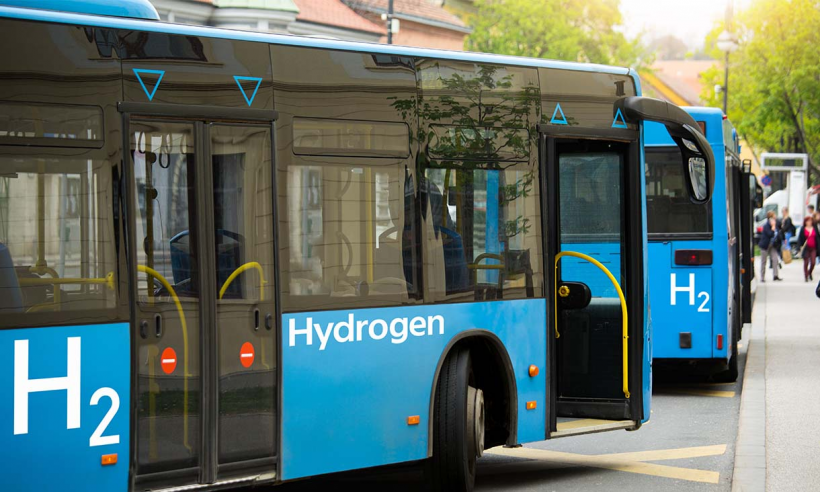Researchers at RMIT University in Melbourne have significantly improved green hydrogen production through sound waves. By combining high-frequency sound waves with more cost-effective green hydrogen production methods, the team increased output by a factor of 14. This development could be significant in the global effort to move away from fossil fuels and towards cleaner energy sources.
The team, led by Amgad Rezk, a lecturer at the School of Engineering at RMIT University, described the results as "exciting." According to Rezk, green hydrogen is likely to play a significant role in the future as an energy source, and the recent findings documented in the journal Advanced Energy Materials could help make this cleaner fuel more widely available.
He also noted that transitioning to cleaner energy sources, such as electrifying and decarbonizing the economy, is the next logical step, but there are certain sectors, like heavy machinery and shipping, that may be more challenging to electrify. In these cases, green hydrogen could serve as a potential substitute.
Good Vibrations Charge Green Hydrogen Production
Amgad Rezk pointed out that only about 4% of global hydrogen is currently considered "green," and there is still room for improvement in decarbonizing the existing demand for hydrogen. However, economic factors play a role in this, and more research is still needed to reduce costs and increase scalability. Innovative strategies like using sound waves could potentially help in this regard. Hydrogen is the most dominant component in the macrocosm and can be assumed to be a sustainable energy origin, but not all hydrogen energies have identical environmental influences.
Green hydrogen, produced through electrolysis by splitting water, is the cleanest option as it emits almost no greenhouse gasses. In contrast to green hydrogen, blue hydrogen is produced by splitting natural gas into hydrogen and carbon dioxide, a process that can emit greenhouse gasses. Currently, most hydrogen fuel produced globally is made through this process.
While hydrogen can potentially be a major contributor to the transition to green energy because it only produces oxygen as a byproduct through the process of water-splitting, there are limitations to this process. It requires highly corrosive electrolytes and expensive, scarce electrode materials like platinum and iridium. Rezk stated that it would be ideal to use neutral electrolytes and avoid costly electrode materials for water-splitting to make the process more practical.
One issue with using a neutral or nearly neutral pH electrolyte solution for electrolysis is that it often leads to lower hydrogen production levels than using a very acidic or alkaline solution. Rezk and his team designed a setup that included a standard electrochemical cell for electrolysis and a device that emitted high-frequency sound waves to try to overcome this challenge. These sound waves are actually above the range of human hearing, around ten megahertz, according to Rezk.

The team's invention offers a promising way to tap into a plentiful supply of cheap hydrogen fuel for transportation and other sectors, which could radically reduce carbon emissions and help fight climate change.
Electrolysis: Splitting Hydrogen and Oxygen
Two electrodes with opposite voltage biases complete a circuit and split water into hydrogen and oxygen through electrolysis in a standard electrochemical cell. The researchers used this basic setup but added high-frequency sound waves passed through the electrode and electrolyte as the process was running. This led to a 14-fold increase in hydrogen production rate compared to experiments without sound waves.
In an interview with Newsweek, Rezk mentioned that the high-frequency sound waves disrupt the hydrogen bond lattice, a process referred to as "frustration," which weakens the water bonds and makes it easier to extract hydrogen from water. This is similar to getting more juice out of a lemon by applying pressure to it. This development has the potential to significantly reduce the cost of green hydrogen production, according to Rezk.
The study also found that using the sound waves resulted in an estimated 27% net energy reduction, even though the sound waves themselves consumed energy. This suggests that reducing the net energy required to run the reaction and lowering the cost of hydrogen production in a neutral pH system could hold a vital consequence on the hydrogen market.
While the results are promising and indicate the potential for further research in this area, Rezk noted that there are still challenges to be addressed in terms of scaling up the technology. He mentioned that the team is seeking partners in the industry to help bring the work from the laboratory into the real world.
RELATED ARTICLE: The Rise of Renewable Energy in the Automobile Industry
Check out more news and information on Green Energy in Science Times.














